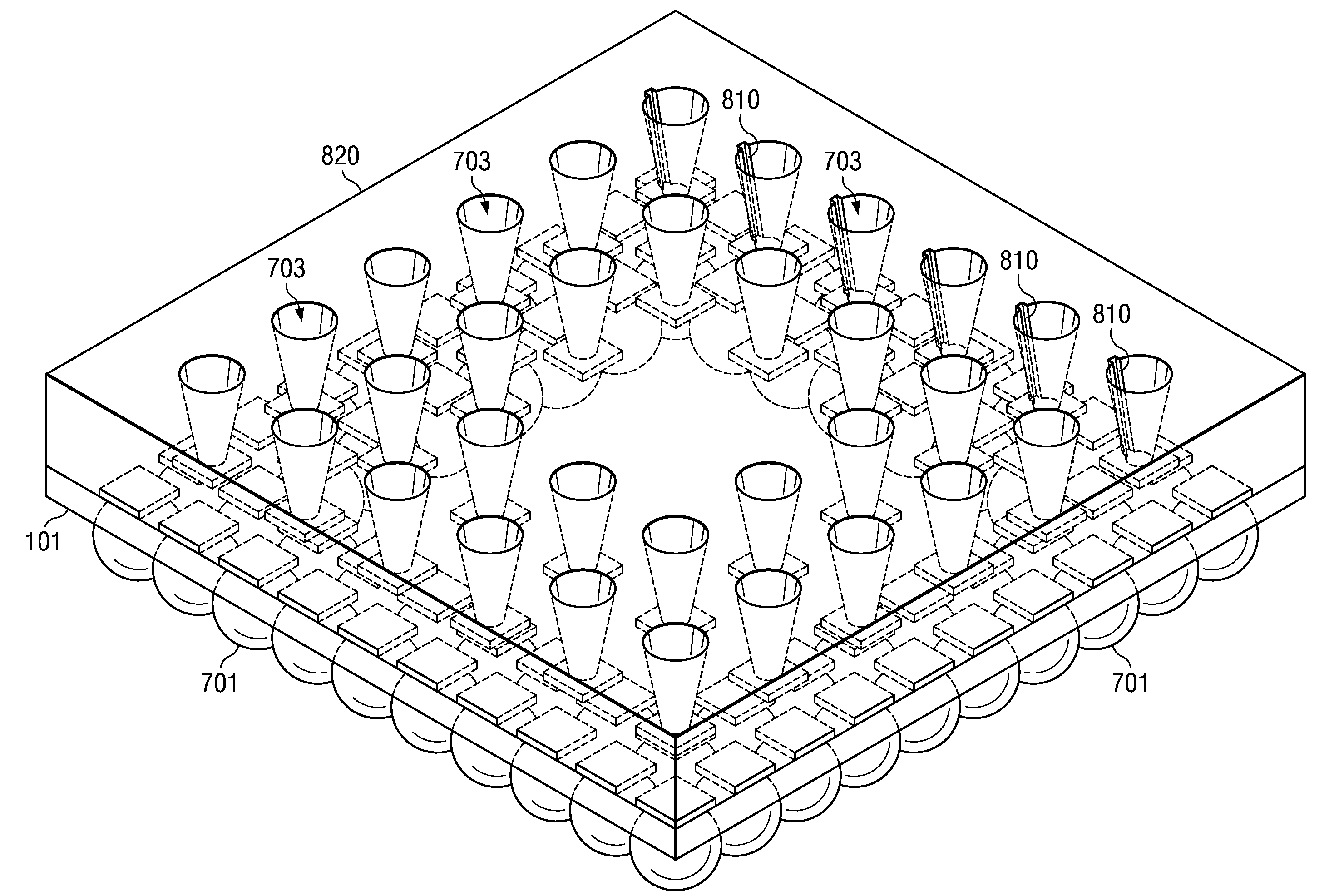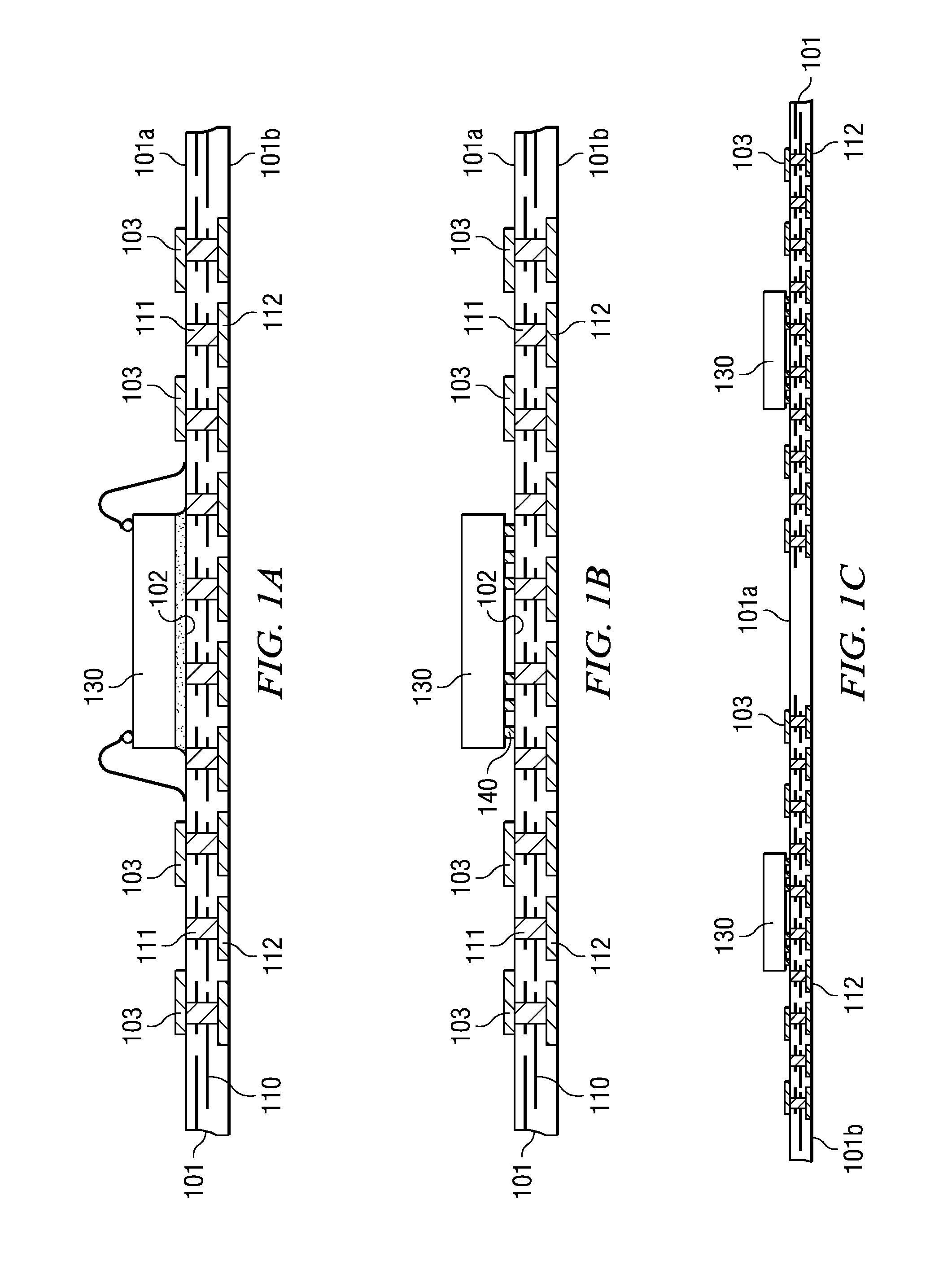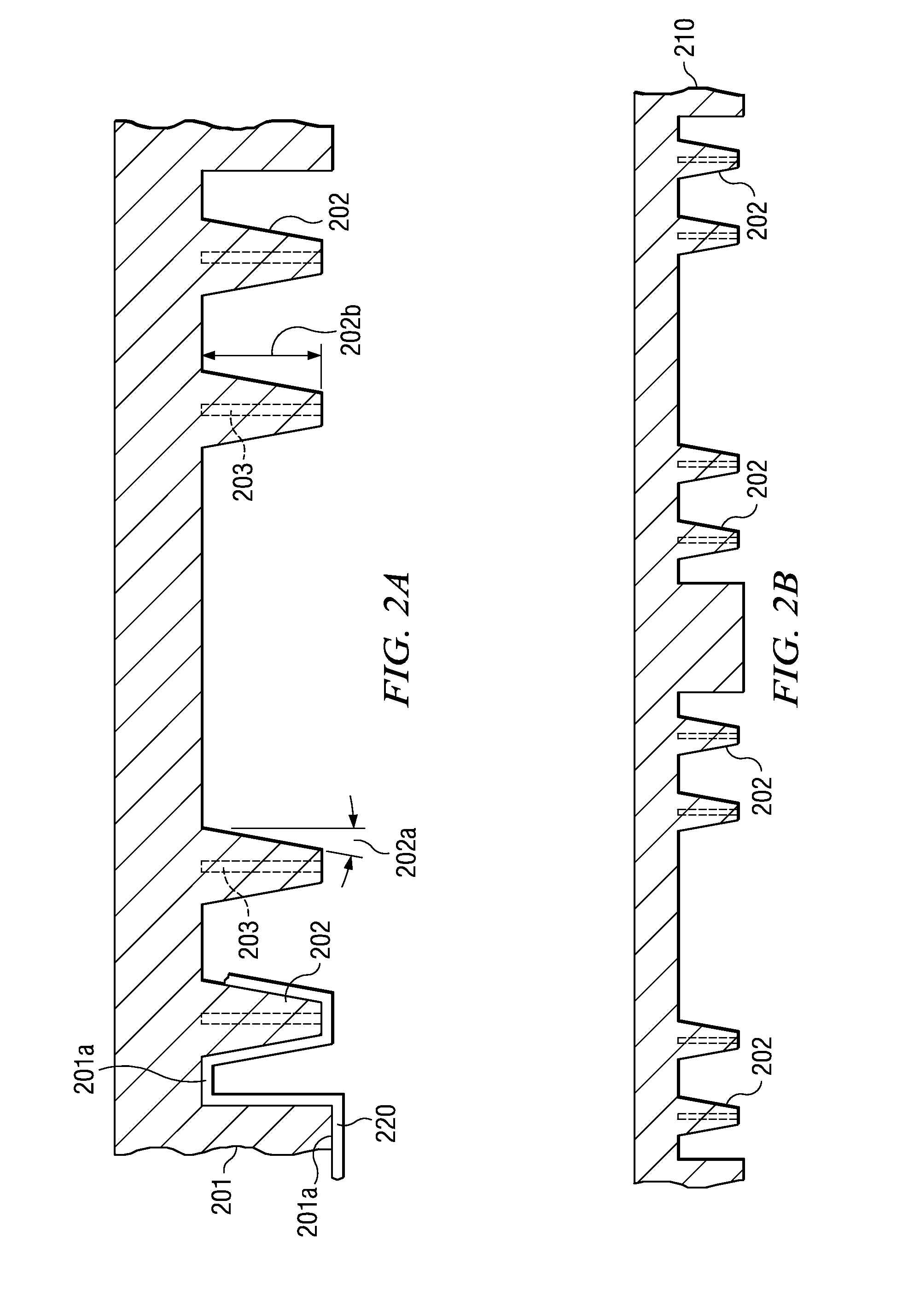Method for Fabricating Array-Molded Package-on-Package
a technology of array-molded packages and integrated circuits, applied in semiconductor devices, semiconductor/solid-state device details, electrical apparatus, etc., can solve the problems of increasing product warpage problems, reducing product thickness, and no longer being acceptable in recent applications, so as to improve testability and thus yield, and reduce cost and simplify the effect of approach
- Summary
- Abstract
- Description
- Claims
- Application Information
AI Technical Summary
Benefits of technology
Problems solved by technology
Method used
Image
Examples
Embodiment Construction
[0033]FIGS. 1A through 7 illustrate schematically the steps of one embodiment of the present invention, a method for array-molding semiconductor devices. The steps shown in FIGS. 1A and 1B show the assembly of a semiconductor chip on a substrate by wire bonding (FIG. 1A) and by flip-chip technology (FIG. 1B); FIG. 1C exemplifies a portion of an array of chips assembled by flip-chip. A sheet-like substrate 101 with insulating core (for example, plastic, glass-fiber reinforced, ceramic) is integral with two or more patterned layers of conductive lines and conductive vias 111 (preferably copper) and contact pads in pad locations. Lines 110 do not reach beyond the boundaries of substrate 101. Substrate 101 has a first surface 101a and a second surface 101b, and a preferred thickness range from 0.2 to 0.5 mm. The first surface 101a includes chip assembly sites 102 and contact pads 103 in pad locations. The metal of the contact pads is preferably copper with a solderable surface (for exam...
PUM
 Login to View More
Login to View More Abstract
Description
Claims
Application Information
 Login to View More
Login to View More - R&D
- Intellectual Property
- Life Sciences
- Materials
- Tech Scout
- Unparalleled Data Quality
- Higher Quality Content
- 60% Fewer Hallucinations
Browse by: Latest US Patents, China's latest patents, Technical Efficacy Thesaurus, Application Domain, Technology Topic, Popular Technical Reports.
© 2025 PatSnap. All rights reserved.Legal|Privacy policy|Modern Slavery Act Transparency Statement|Sitemap|About US| Contact US: help@patsnap.com



